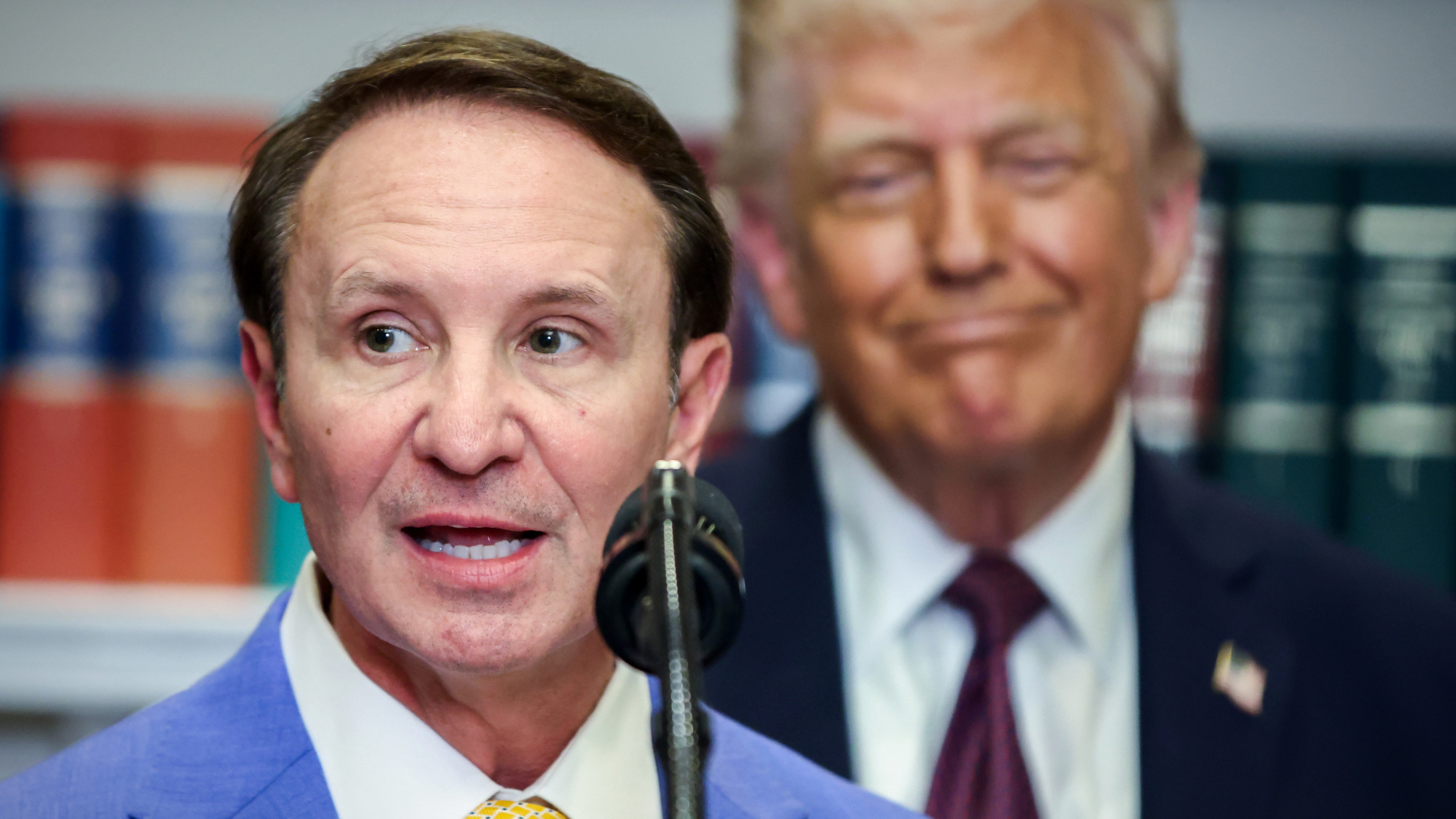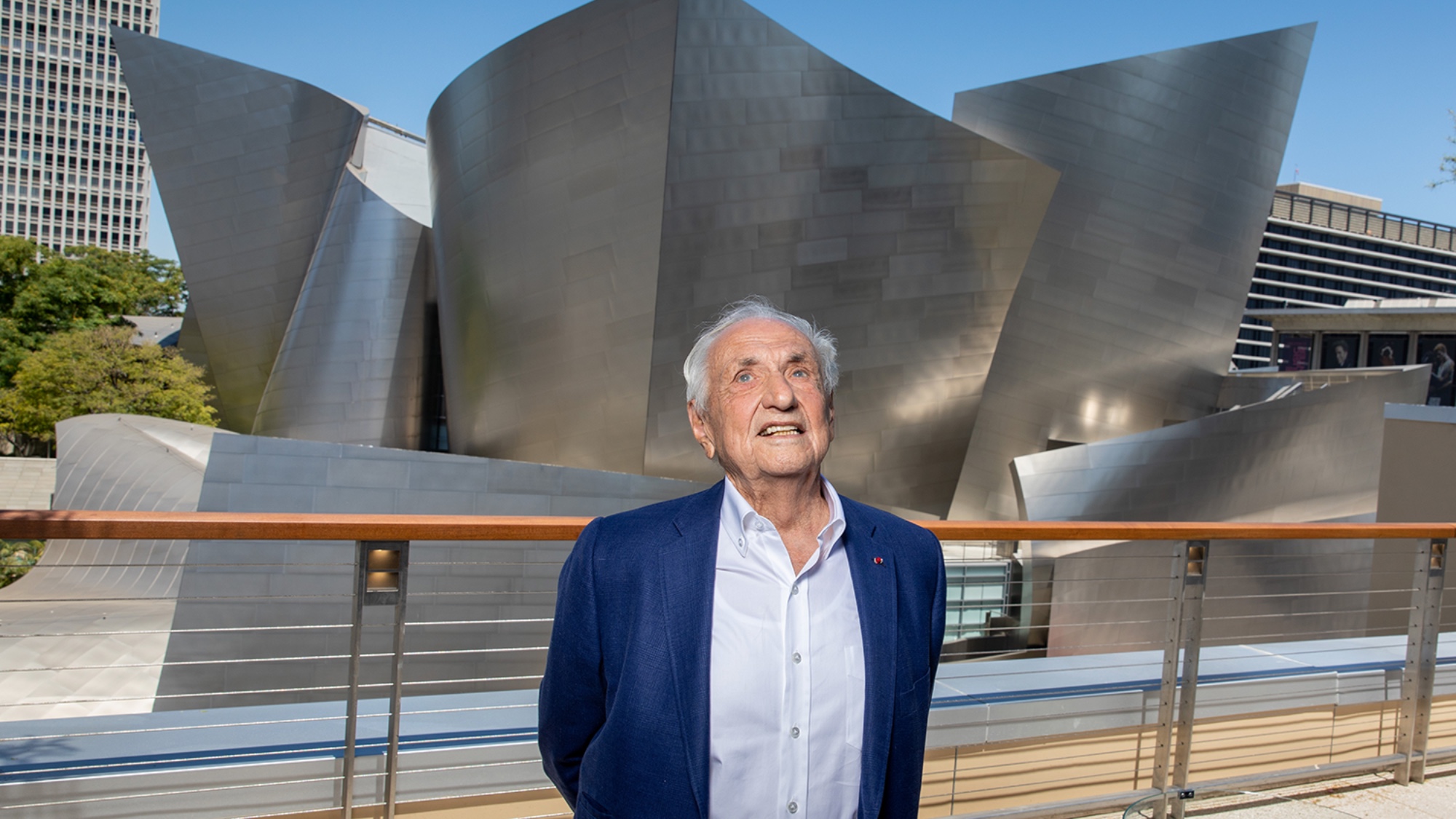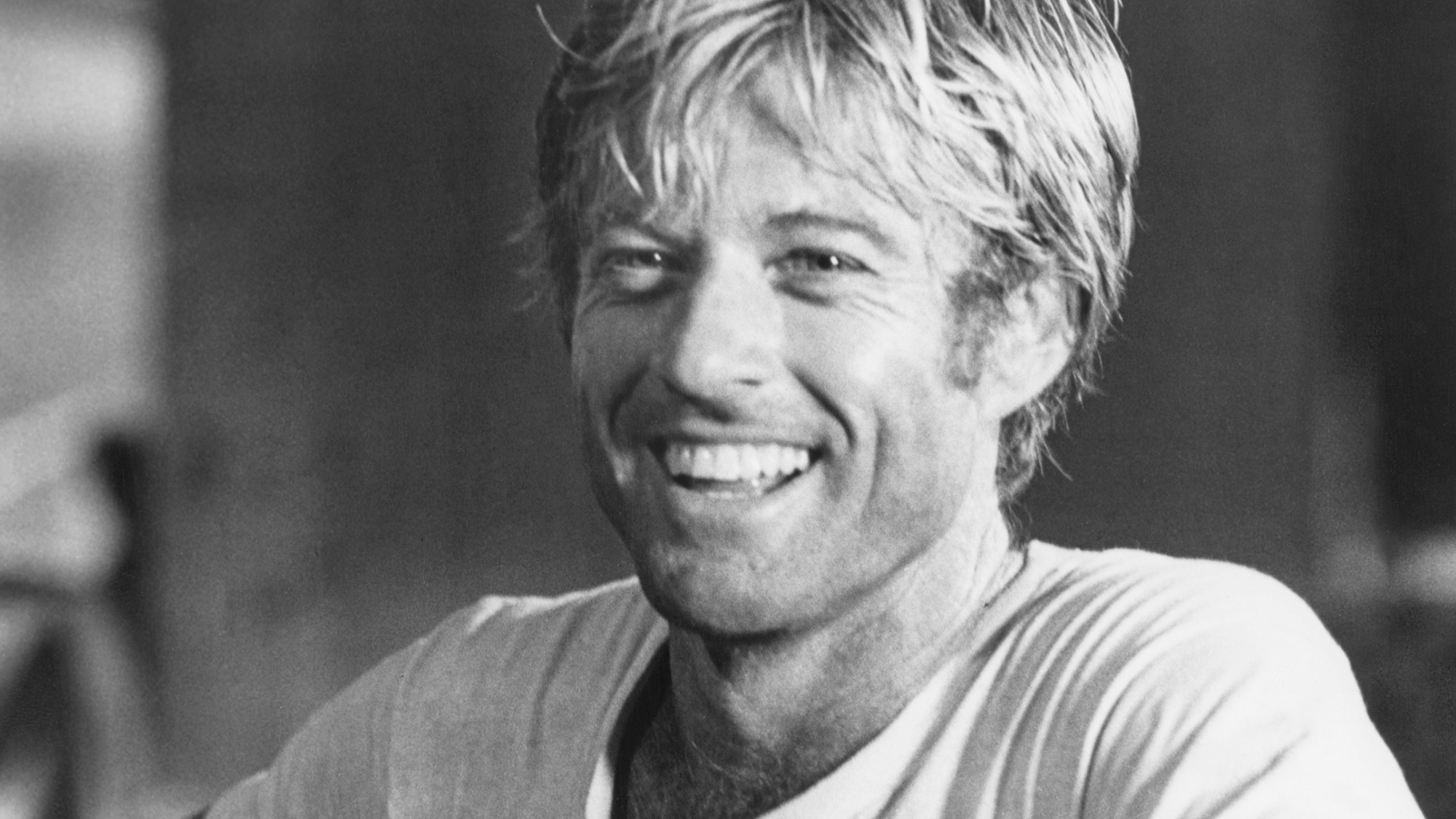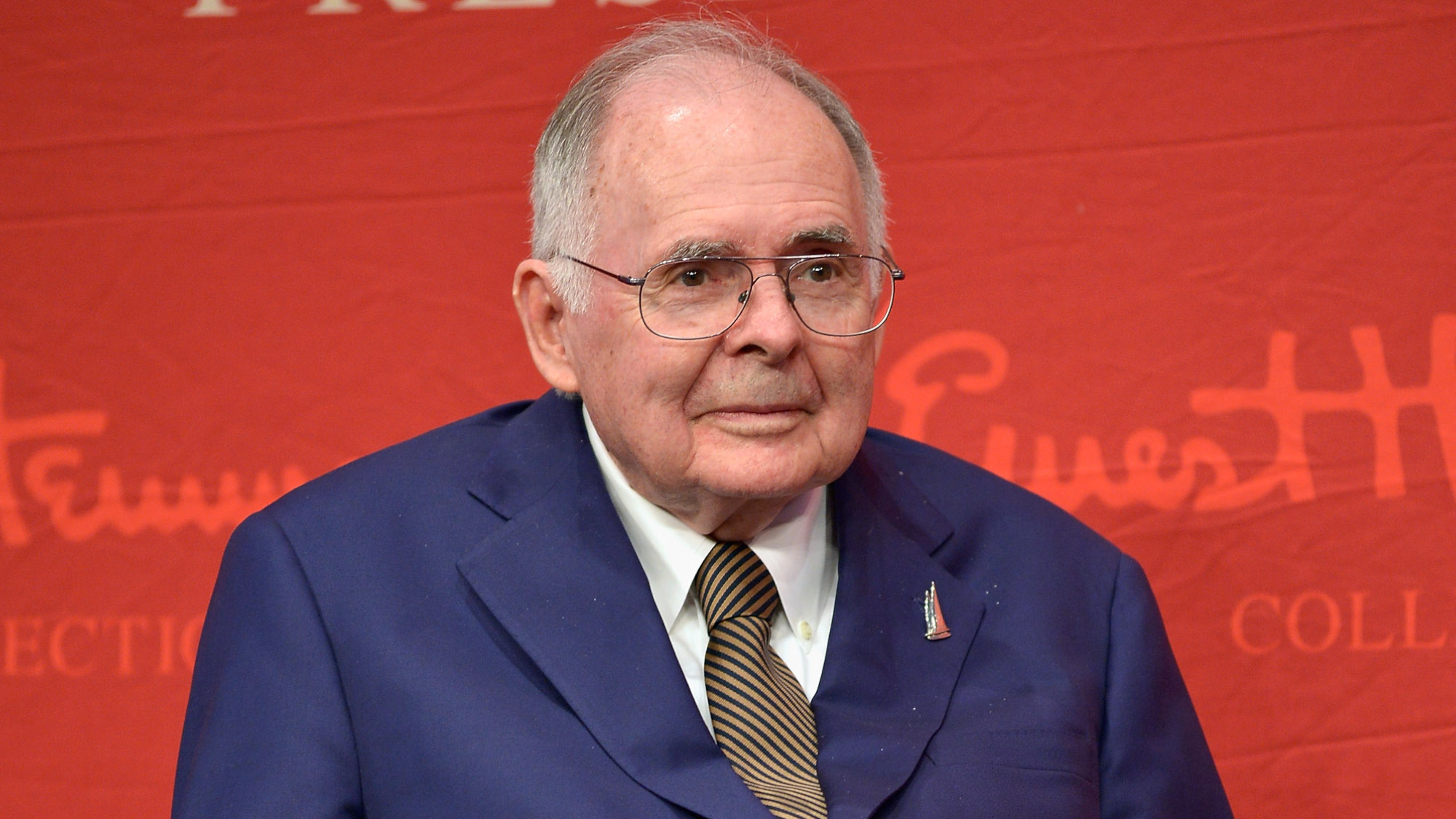Obituaries
John A. Wheeler, Mary Crowe Burns, John Herlitz
The visionary physicist who delved into ‘black holes’
John A. Wheeler
1911–2008
The Week
Escape your echo chamber. Get the facts behind the news, plus analysis from multiple perspectives.

Sign up for The Week's Free Newsletters
From our morning news briefing to a weekly Good News Newsletter, get the best of The Week delivered directly to your inbox.
From our morning news briefing to a weekly Good News Newsletter, get the best of The Week delivered directly to your inbox.
John Wheeler, who has died of pneumonia at 96, was a physicist who refused to specialize. He researched the Big Bang theory of creation and experimented with Albert Einstein’s general theory of relativity. He inspired work on the existence of parallel alternate universes. But he is best remembered for popularizing the term “black hole” to denote a collapsed star of almost incomprehensible density.
“Johnny” Wheeler got his Ph.D. in physics from Johns Hopkins when he was only 21 and joined the Princeton University faculty in 1938, said The Washington Post. Within a short time, he had joined the wartime Manhattan Project; with Nobel Prize winner Niels Bohr, he “worked out the process by which uranium fissions to release the energy unleashed in the atom bomb.” They discovered that an isotope of plutonium could also be split, again with the release of energy. Wheeler was personally vested in the race to build the bomb. “At one point he received a postcard from a brother who was in combat in Italy. It said only this: ‘Hurry up.’” His brother was killed in October 1944, nine months before the weapon was perfected.
Wheeler initially resisted the concept that made his reputation, said The New York Times. In 1939, J. Robert Oppenheimer suggested that “a dead star of sufficient mass could collapse into a heap so dense that light could not even escape from it. At the center, space would be infinitely curved and matter infinitely dense.” Wheeler thought the notion absurd. But after seeing mathematical models, he embraced the idea. “At a conference in New York in 1967, Wheeler, seizing on a suggestion shouted from the audience, hit on the name ‘black hole’ to dramatize this dire possibility for a star and for physics.” He wrote in his 1999 autobiography, Geons, Black Holes & Quantum Foam, that a black hole “teaches us that space can be crumpled like a piece of paper into an infinitesimal dot, that time can be extinguished like a blown-out flame, and that the laws of physics that we regard as ‘sacred,’ as immutable, are anything but.”
Faced with mandatory retirement from Princeton, Wheeler transferred to the University of Texas where, well into his 90s, he still went to his office a few days a week. “If you haven’t found something strange during the day,” he once said, “it hasn’t been much of a day.”
A free daily email with the biggest news stories of the day – and the best features from TheWeek.com
The phone operator who worked for seven presidents
Mary Crowe Burns
1923–2008
One day in 1962, White House switchboard operator Mary Crowe Burns got a call from President Kennedy’s 5-year-old daughter, Caroline, asking to be connected to Santa Claus. Burns quickly turned to someone at the nearby telegraph office; the man took the line and, with a hearty “Ho-ho-ho,” gave Caroline a report from the North Pole. A few minutes later, the president himself was on the line. “Mary,” he asked, “how did you do that?”
That was just business as usual for Burns, who worked the White House phone bank for 30 years, the last three as chief operator, said The Washington Post. “From the Truman through the Carter administrations, she fielded wacky, workaday, and world-changing calls” with an expertise that she called “part diplomat, part psychologist, and part security guard.” After high school, Burns joined Chesapeake and Potomac Telephone, then the Treasury Department, and finally the White House, in 1949. “Leading a staff of 17 women and two men, she was a prodigious worker, once toiling 40 days without a break.” One of Burns’ proudest moments came when President Truman ordered her to connect with his wife, Bess, and daughter, Margaret, who were two days out to sea, bound for Europe. “Within 10 minutes, Burns patched together ship-to-shore radio and telephone call.” Afterward, Truman told her, “No one has ever had such service.”
Burns dealt with many crises, said Time. On Aug. 9, 1974, the day Richard Nixon resigned, she and her staff fielded a record 102,000 calls. When President Kennedy was assassinated, “calls came in from all over the world, but the lines were so busy that only a fraction got through.” Most of her encounters were less earthshaking. Once she picked up the blinking presidential line and was baffled to hear a series of bangs until Lyndon Johnson explained that his grandson was “breaking up the phone.” In 1971, rain threatened to cancel first daughter Tricia Nixon’s Rose Garden marriage ceremony. “Finally, Nixon called and politely asked, ‘Operator, do you know if this wedding is going on today?’ It did.”
Burns, a widow, died in Albuquerque of Alzheimer’s disease.
The Chrysler designer who perfected muscle cars
John Herlitz
1942–2008
Before expensive gas, emissions standards, and new safety regulations put a serious crimp in the auto industry, Americans thrilled to so-called muscle cars. Designed for maximum torque, these midsize vehicles had short rear decks and long hoods, under which powerful V8 engines delivered tire-smoking acceleration. Among their pioneering designers was John Herlitz, who spent 35 years in the business.
“As early as age 13, he was sending sketches of cars to Chrysler,” said The New York Times. After graduating from Pratt Institute in 1964, Herlitz joined the automotive giant. He made his reputation in 1970 with the Plymouth Barracuda. In contrast to Chrysler’s earlier, mediocre forays into the muscle market, the ’Cuda “was clean and largely unadorned, with a wide body and a hunkered-down stance that hinted at considerable power.” A later model, the Hemi ’Cuda, featured a monster 425-horsepower engine that made it among “the most sought-after muscle cars of all time.” Today, at car auctions, some specimens fetch $2 million. “Herlitz followed up with well-received makeovers of other revered performance cars, including the 1971 Plymouth Road Runner and the GTX.”
After the country’s craze for muscle cars cooled, Herlitz worked on compact cars and minivans, said Automotive News. “He also had a major hand in the Chrysler design renaissance of the 1990s, when his production teams gave birth to the LHS, Intrepid, and Concorde, as well as the Neon and Intrepid sedans.” At the time of his retirement, in 2000, he was senior vice president for product design. Herlitz, who died following a fall, is survived by two sons.
-
 Whiskey tariffs cause major problems for American distillers
Whiskey tariffs cause major problems for American distillersIn the Spotlight Jim Beam is the latest brand to feel the pain
-
 Danes ‘outraged’ at revived Trump Greenland push
Danes ‘outraged’ at revived Trump Greenland pushSpeed Read
-
 ‘Tension has been building inside Heritage for a long time’
‘Tension has been building inside Heritage for a long time’Instant Opinion Opinion, comment and editorials of the day
-
 Joanna Trollope: novelist who had a No. 1 bestseller with The Rector’s Wife
Joanna Trollope: novelist who had a No. 1 bestseller with The Rector’s WifeIn the Spotlight Trollope found fame with intelligent novels about the dramas and dilemmas of modern women
-
 Frank Gehry: the architect who made buildings flow like water
Frank Gehry: the architect who made buildings flow like waterFeature The revered building master died at the age of 96
-
 R&B singer D’Angelo
R&B singer D’AngeloFeature A reclusive visionary who transformed the genre
-
 Kiss guitarist Ace Frehley
Kiss guitarist Ace FrehleyFeature The rocker who shot fireworks from his guitar
-
 Robert Redford: the Hollywood icon who founded the Sundance Film Festival
Robert Redford: the Hollywood icon who founded the Sundance Film FestivalFeature Redford’s most lasting influence may have been as the man who ‘invigorated American independent cinema’ through Sundance
-
 Patrick Hemingway: The Hemingway son who tended to his father’s legacy
Patrick Hemingway: The Hemingway son who tended to his father’s legacyFeature He was comfortable in the shadow of his famous father, Ernest Hemingway
-
 Giorgio Armani obituary: designer revolutionised the business of fashion
Giorgio Armani obituary: designer revolutionised the business of fashionIn the Spotlight ‘King Giorgio’ came from humble beginnings to become a titan of the fashion industry and redefine 20th-century clothing
-
 Ozzy Osbourne obituary: heavy metal wildman and lovable reality TV dad
Ozzy Osbourne obituary: heavy metal wildman and lovable reality TV dadIn the Spotlight For Osbourne, metal was 'not the music of hell but rather the music of Earth, not a fantasy but a survival guide'